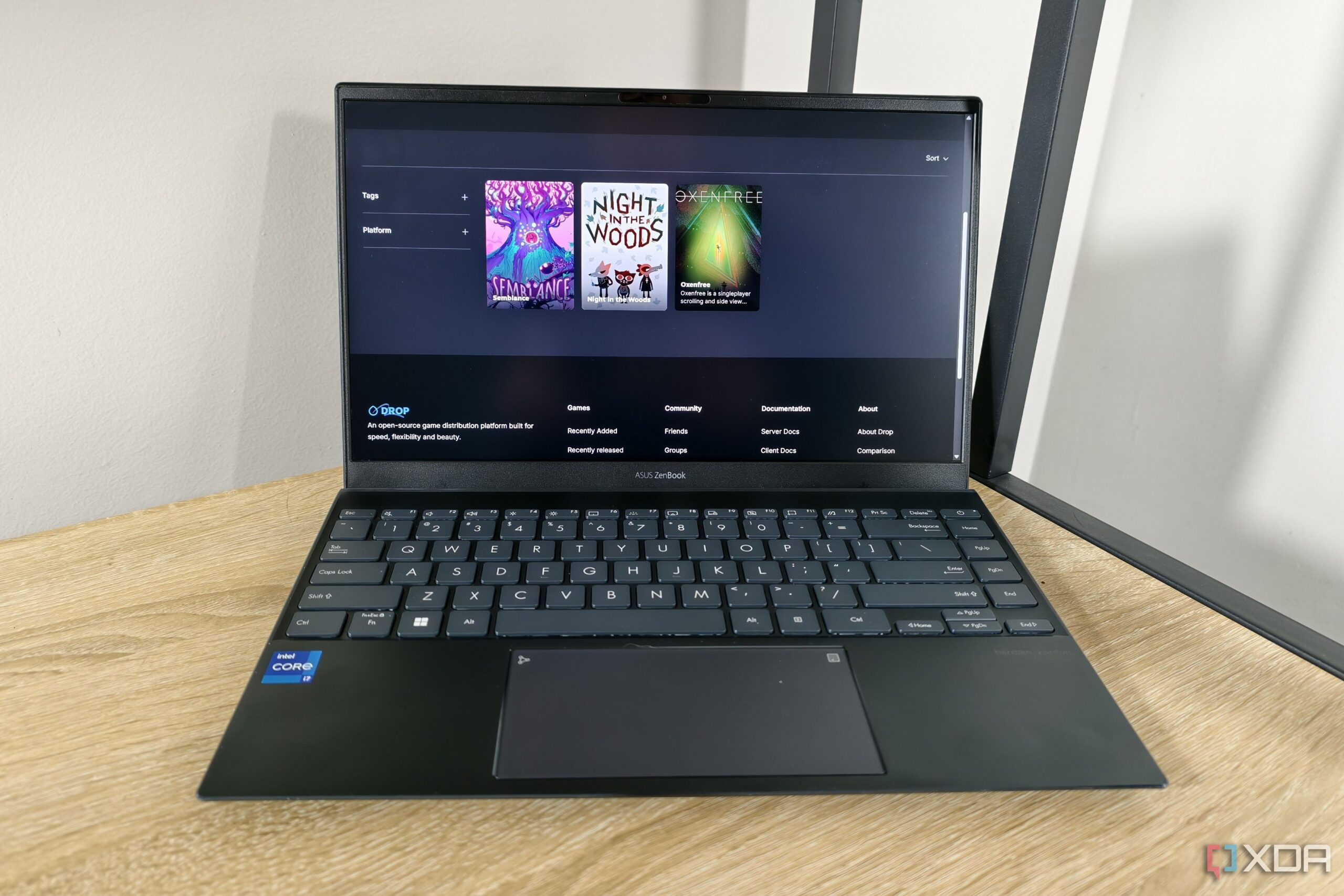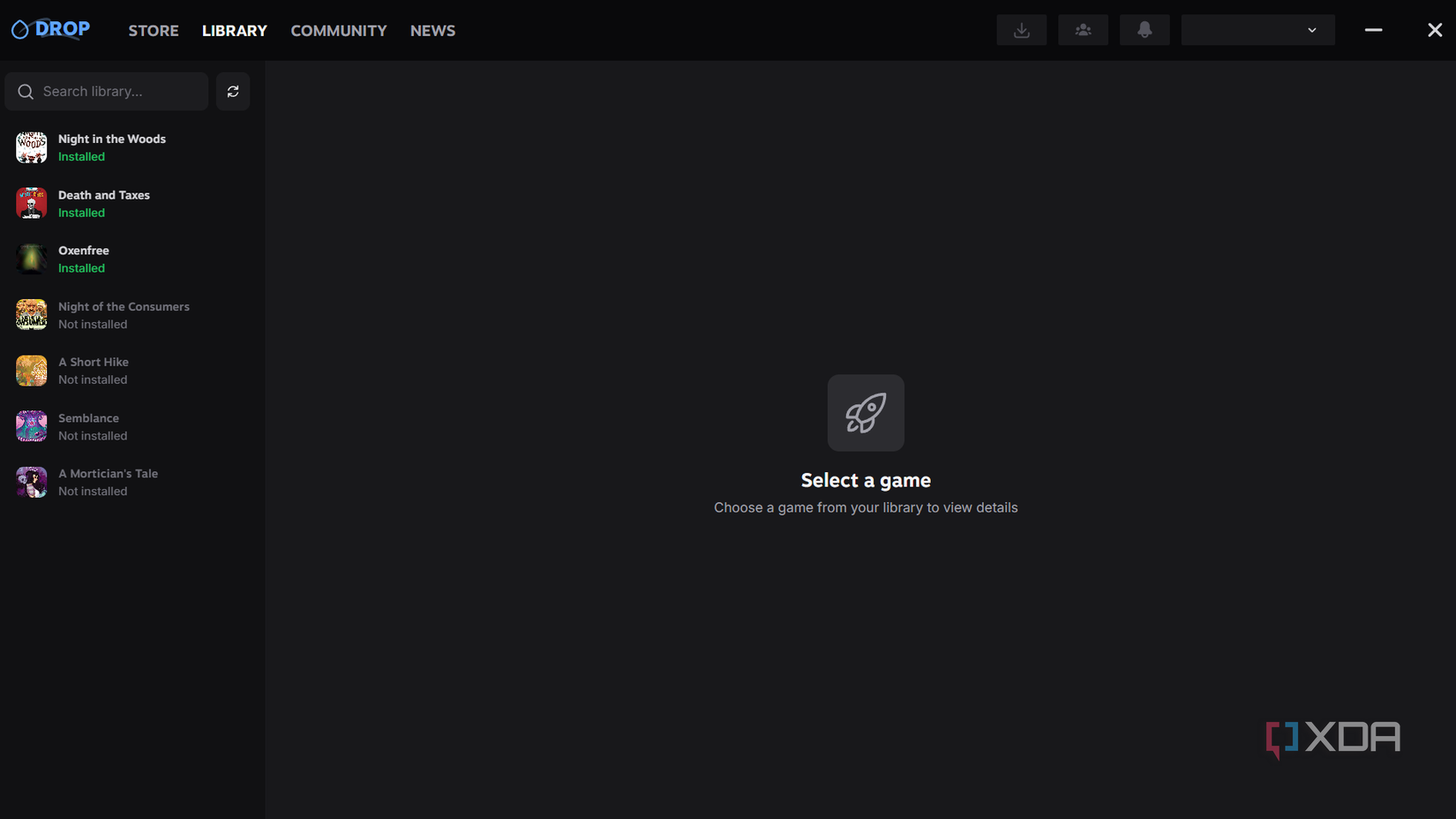While some may argue that nobody can beat Steam, there’s definitely interest in alternatives to the platform. I personally love Steam for its social features and free cloud-saving, but I’m also frustrated by the era of DRM games and the need to first log in to be able to play games that are already installed on my device.
That’s where Drop comes in. The open-source game distribution platform serves as a home for your DRM-free games, allowing you to keep these titles stored and updated via a self-hosted server.
What is Drop?
A self-hosted game distribution platform
Drop is an open-source game distribution platform and game launcher that uses a self-hosted server for DRM-free titles. One of the major benefits is its cross-platform support, with the developers providing Linux, Windows, and macOS clients.
After you’ve set up the Drop server, you are able to link it to different users and clients. While I set up my instance to only be accessible on my home network, it’s possible to share it with friends through an instance that is exposed to the wider web. You can control who can sign in to your server using simple authentication or by configuring OpenID Connect for your server.
The Store allows users to choose which games to add to their libraries. You can also publish news for your users — however, this is currently only available through the web dashboard. While the project is still in beta, the developers plan to add features like P2P downloads, game networking, cloud saves, and playtime tracking in the future.
How to get started with Drop
You’ll need a server, games, and the client
There are three main ingredients to getting Drop working: the Drop server, the Drop desktop client, and your game files. You will first need to set up your Drop server, which I did with the help of the official docker-compose.yml file (though I had to modify the ./library and ./data path variables to match the directories on my PC). Once the server is running, you will need to create an admin account to import and manage games.
After setting up the server and the admin credentials, you will need to structure your game library and import games to your server. You can choose whether you want to import metadata for your games, which I did using the built-in PCGamingWiki tool. Other options include IGDB and Giant Bomb, but they require additional configuration.
Drop is still under active development, so you’ll likely encounter bugs while setting up the client and server. However, the developers are very responsive on their Discord server, which allows users to log support tickets and troubleshoot issues.
After importing metadata, you will also need to import a version of the game. This allows you to easily separate your library into different folders for multiple versions, as well as overwriting files if you simply want to use the latest version. When importing a version, you will also need to select the right executable file for the game. Since I was using Drop on Windows, this just meant selecting the game’s .exe file.
To begin adding your games to the Drop client, you will need to go to the Store page on the web dashboard and add it to your library. Once this is done, you can open the client and authenticate it. Your library games will appear in the client, and you can choose to download and install them from there.
Once installed, a setup button will appear. However, for me, this just launched my games.
Drop gives me more control over my DRM-free games
A central launcher that I have control over
A few years ago, I bought a bunch of DRM-free games as part of a bundle. However, despite being keen to try out many of these games, my own disorganization meant that I often misplaced the files after downloading them. I tried to integrate the Itch.io launcher into my Epic Games Store client, but this proved slow and tedious.
But since installing Drop, I’ve been able to finally get started with these games, while knowing that I don’t have to ever worry about them being de-listed. This was a concern for me after Oxenfree was removed from Itch.io (though those that had already downloaded it could access it). The idea that a game that I had purchased could simply disappear from the store has been a frustration I’ve contended with ever since. With Drop, the games are hosted on my own server, so I am not beholden to the whims of companies.
Furthermore, because Drop downloads a copy of the game to your device, you also don’t need your server to be constantly accessible to play your games. I had actually started up one of my games from the client, not realizing that I had forgotten to start up my server. This is another major benefit for users of the launcher.
You can technically play games while offline on Steam, but this first requires you to connect to Steam, make sure your games are updated, and then switch to the offline mode. With Drop, there was none of this hassle.
I’m really interested to see where the developers take it from here, as many of the upcoming features look poised to make it a great self-hosted alternative to Steam.
Drop made me feel less bleak about convenient game launchers
We’ll always have to contend with DRM drawbacks for many games, but Drop made me feel like I could still conveniently access DRM-free purchases without having to worry about keeping track of files across my computers. It lets me centralize all these titles on one server and in one launcher.
While I still enjoy Steam achievements and the perks of using Valve’s launcher, being able to deploy DRM-free games to my own server is going to make me more determined to seek out these versions instead. Drop is quickly becoming one of my favorite self-hosted apps.

